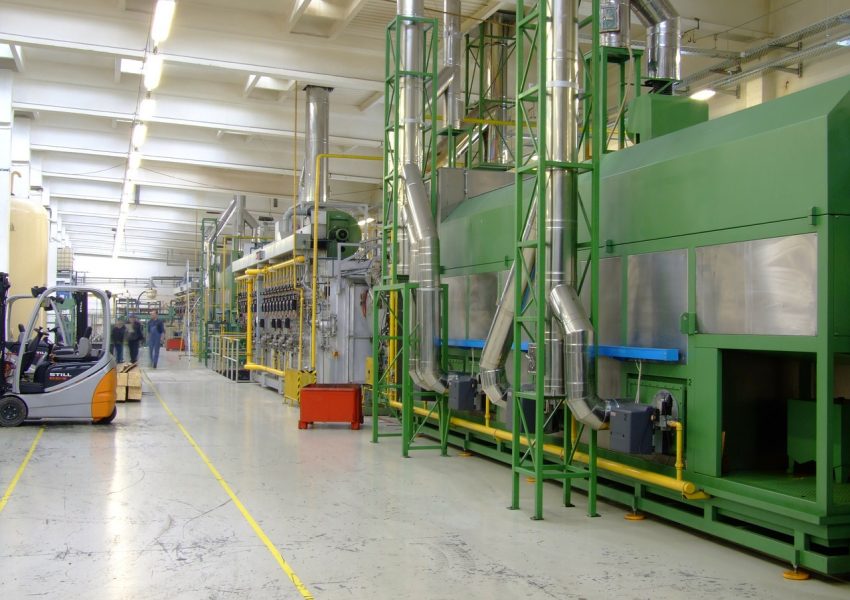Industrial Property Registration
WHAT IS A TRADEMARK?
A trademark is a distinctive mark, which identifies goods or services offered by a particular individual or enterprise. Its origins go back to ancient times, when artisans reproduced their signatures or “brands” on their artistic or everyday use products. Over the years, these brands evolved to reach today’s protection registration system.
WHAT DOES PROTECTION OF A TRADEMARK BRING?
A registered trademark provides legal protection to its owner, providing him with the exclusive right to use it, for the purpose of identifying goods or services or authorizing someone else to use it in exchange for payment.
The protection lasts for a period of 10 years, but it can be renewed for an indefinite period beyond this period, if the renewal fees are paid.

Trademark protection is enforced by the court, which has the power to block trademark infringement.
Trademark protection hinders, at the same time, the efforts of dishonest competitors, such as counterfeiters, to use similar insignia to market weaker products or services.
WHICH TRADEMARKS CAN BE REGISTERED?
The possibilities are almost limitless. Marks can be a combination of words, letters and numbers. They can consist of sketches, symbols, three-dimensional signs, such as the shape and packaging of goods, auditory signs, such as musical or vocal sounds, scents or colors used as distinctive features. In addition to brands that identify the trademark of goods and services, there are other categories of trademarks:
Collective brands
Certification marks are used as an indication of the quality, origin, method of production or other common characteristics of goods or services.
WHAT RIGHTS DOES THE OWNER OF A TRADEMARK HAVE?
The owner of a trademark has the right to decide who may or may not use the trademark. The proprietor of the trademark may grant authorization or license to other parties to use the trademark, subject to mutually agreed terms. The owner can also sell the right to someone else, who then becomes the new owner of the trademark. If the trademark registration is not renewed, the trademark protection expires upon its expiration and the owner no longer owns exclusive rights over the trademark.
HOW TO GET A TRADEMARK?
The following procedural steps should be taken:
Submitting the application for trademark registration, which contains:
Applicant details
Logo view
CONDITIONS FOR TRADEMARK REGISTRATION?
The mark must meet certain conditions in order to enjoy protection as a trademark. It must be distinct, so that consumers can distinguish it as an identifying mark of a particular product, as well as from other identifying brands of products. It must not misinform, deceive or mislead consumers, nor violate public order and morals. Finally, the rights to which it applies may not be the same or similar to the rights already granted to another trademark owner.
WHAT IS INDUSTRIAL DESIGN?
Industrial design is the decorative or aesthetic aspect of an item. Design can consist of three-dimensional features, such as the shape or surface of an item, or two-dimensional features, such as motifs, lines, or colors.
Industrial designs apply to a wide range of industrial and handicraft products: from technical and medical instruments to watches, jewelry and other luxury goods; from didactic computer programs and household appliances to architectural structures; from textile designs to entertainment goods.In order to be subject to protection, a design must be eye-catching. This means that industrial design is, first and foremost, of an aesthetic nature and does not protect any technical characteristics of the items to which it applies.

WHY IS INDUSTRIAL DESIGN PROTECTED?
Industrial designs are what make an article attractive and likable. As a result, they add commercial value to a product and increase its marketability.
When an industrial design is protected, the owners – the individual or company that registered the design – are granted the exclusive right against unauthorized copying or imitation of the design by third parties. This helps to get a fair return on investment. An effective protection system also benefits consumers and the general public by promoting fair competition and fair trade practices.
The protection of industrial designs aids economic development by fostering the creative element in the industrial and manufacturing sectors, as well as in the traditional arts and crafts. They affect the expansion of trade activities and the export of domestic products.
Creating and maintaining industrial designs can be relatively simple and inexpensive. They can be reasonably provided by small and medium enterprises, as well as by individual artists or artisans.
HOW CAN INDUSTRIAL DESIGN BE PROTECTED?
In order to enjoy protection, industrial design must be registered, in accordance with the Industrial Design Act. In order to register, the design must be new. New implies that no similar or very similar design has ever existed before. When the design is registered, a registration certificate is issued.
WHAT ARE THE RIGHTS OF THE INDUSTRIAL DESIGN OWNER?
The owner of the industrial design has the right to decide who may or may not use the industrial design. The owner of the industrial design may authorize or license the other parties to use the design, subject to mutually agreed terms. The owner can also sell the industrial design right to someone else, who then becomes the new owner of the industrial design. Industrial design protection expires on the expiration date and the industrial design enters for public use.
HOW IS AN INDUSTRIAL DESIGN REGISTERED?
The following procedural steps should be taken:
1) Submission of an application for registration of industrial design, containing:
- Design View
- Graphic side